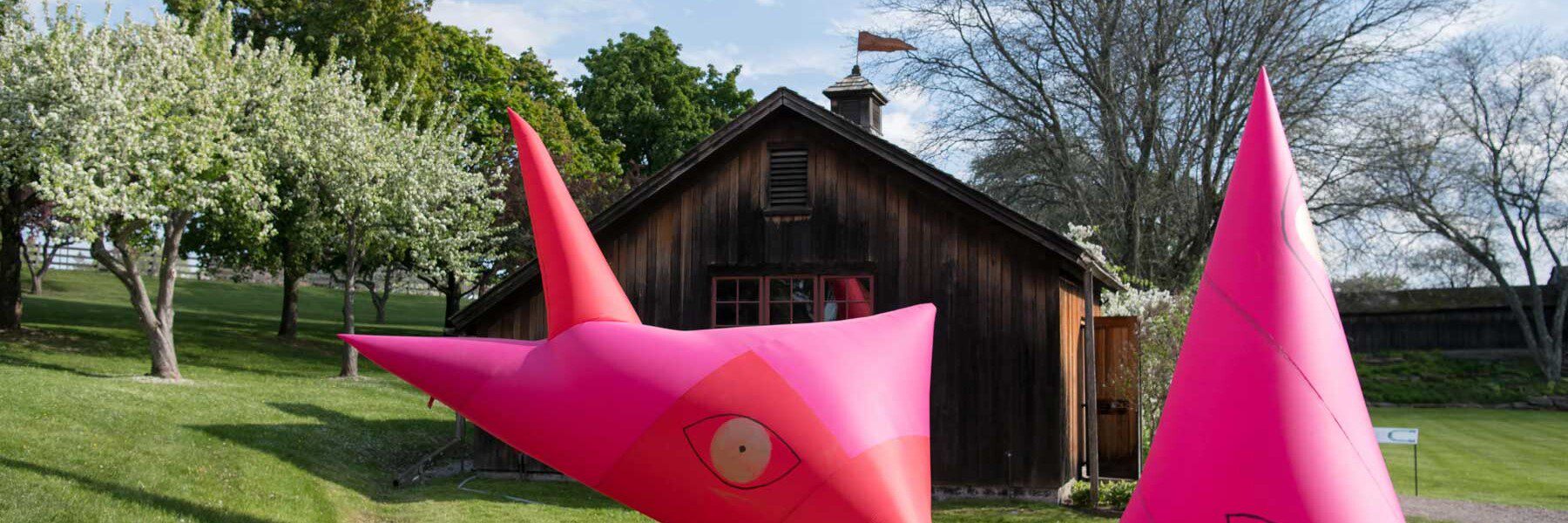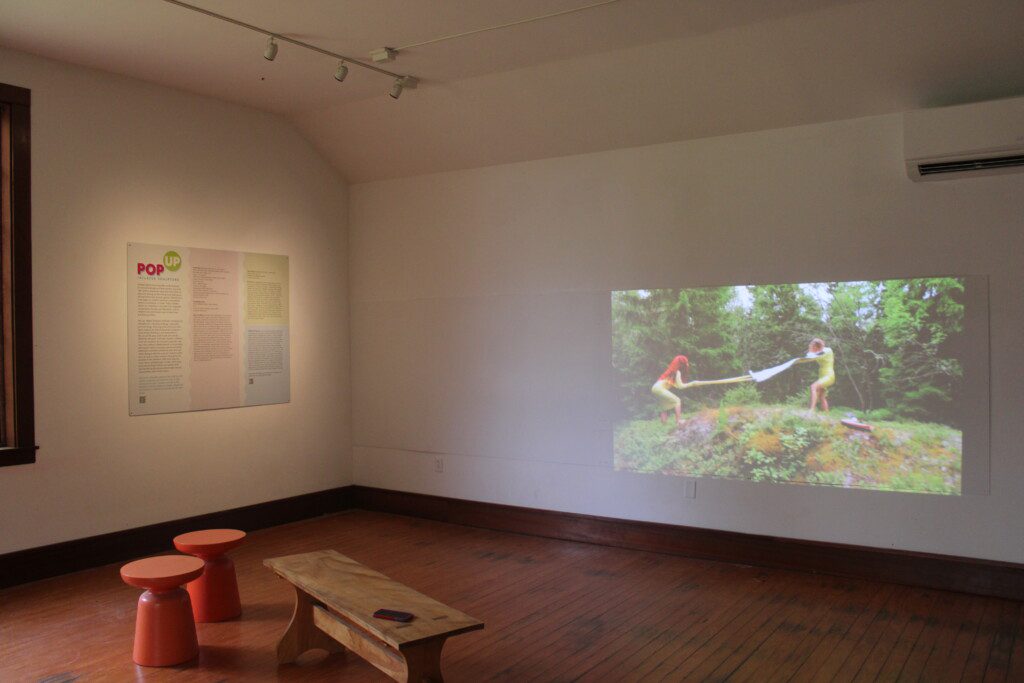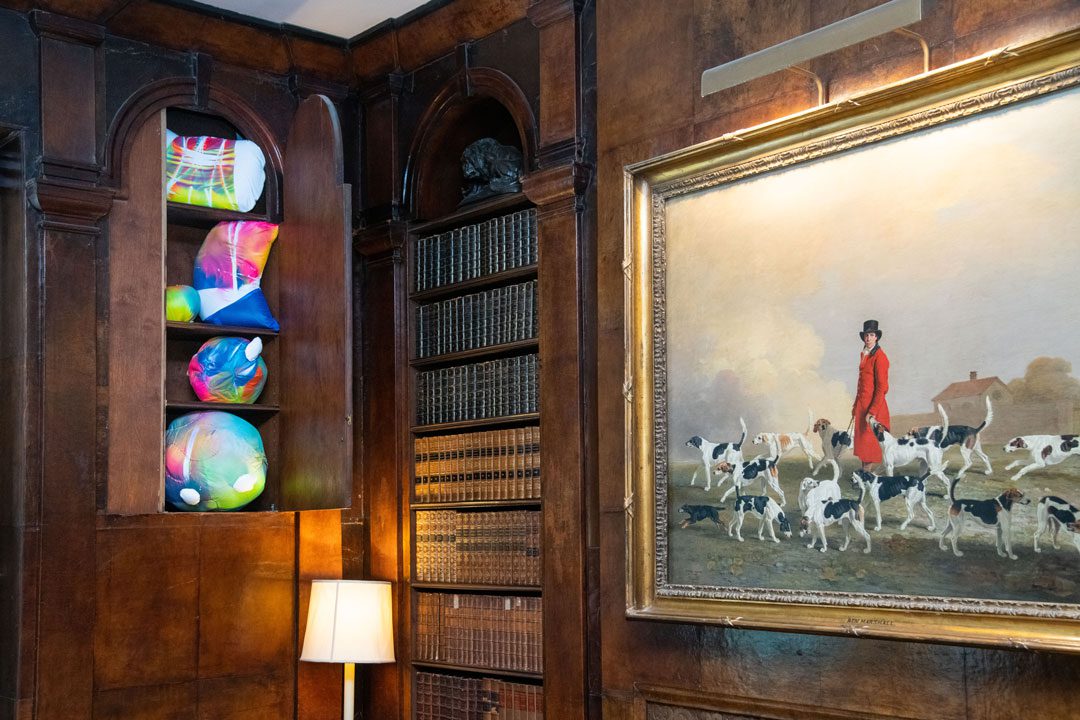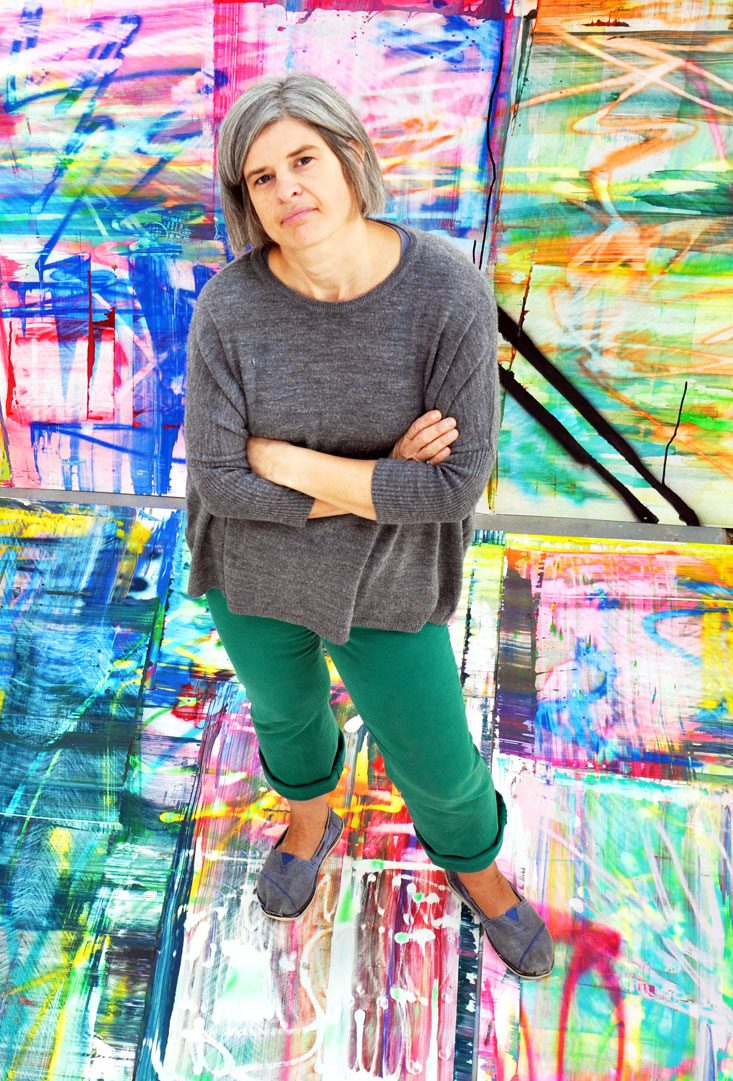Inflated objects have long been at the forefront of innovative design and advancement. Since the 18th century, pneumatic structures have filled our skies and sprung up from the ground, defying traditional forms and, at times, gravity. Inflated structures began as aviation inventions, intended for warfare, surveillance, or travel. Today, inflated objects are ubiquitous in our daily lives, frequently incorporated into play and decoration, such as children’s bounce houses, pool or beach toys, and blow-up chairs.
Pop Up: Inflated Sculpture celebrates contemporary inflatable art’s versatility of design, materiality, and technology. Featuring three artists and artist teams leading the field of pneumatic sculpture—Claire Ashley, Pneuhaus, and Tamar Ettun—Pop Up will fill space both inside and outside Shelburne Museum. Every two months, a different artist will transform the museum’s grounds, placing a new outdoor inflated artwork in conversation with nearby historic structures and environments. Additional multimedia artwork by each artist will create dialogue with the museum’s historic collections at various indoor locations throughout the duration of the exhibition. With their large sensuous forms and bold pops of color, these sculptures convey playful humor and wonder while also facilitating discussions about larger sensory, sociopolitical, and cultural topics.
To learn more about this exhibition and view additional images, please visit this website for updates throughout the duration of the exhibition.
Due to the vulnerable nature of the materials, the outdoor sculptures will not be on view on days with excessive wind.
Outdoor Sculpture Schedule and Locations
Tamar Ettun: May 13—July 7, Near Circus Building
Pneuhaus: July 8—September 1, In between Ticonderoga and Diamond Barn
Claire Ashley: September 2—October 22, Electra Havemeyer Webb Memorial Building
Indoor Sculpture Locations
Tamar Ettun: Circus Building
Pneuhaus: Lighthouse
Claire Ashley: Electra Havemeyer Webb Memorial Building
Museum Grounds

















